Quick facts about Yellowknife in February
Weather, daylight, and Aurora in February
Average Temperature: -24.5°C – Warmest -19.7°C, Coldest -29.4°C
Average Hours of Daylight: 8:54:01 – Shortest 7:33:59, Longest 10:15:20
Average Aurora Observation Nights: 25.7
Tourism Popularity: High – Really High? Chinese New Year
February, the little middle month of winter. It is short, it comes after the long stretch of post-holiday darkness that is January, but comes before the hustle and bustle of March.
It is a little month of winter fun. After getting through January, with the increasing sunlight now noticeable, Yellowknifers are waking up again. You could say we never went to sleep, but there is an energy that is coming back. Getting outside and taking in winter activities becomes a little easier. Being social is a little less work again. You might hear more about the planning and preparation going into all the events that take place in March. Or you might meet someone involved in an upcoming local theatre production.
February is a great month to be in Yellowknife to experience a winter city as it is coming alive again. Let’s get into what is going on and what you should know.
Weather and Climate
Above I mention that the average temperature in February will be -24.5°C, and for the most part this will probably be close to what you might experience. However, and I am no meteorologist, February often has these freak spells of very warm weather. We’re talking about close to 0°C. Like a chinook in the sub-arctic.
That said, on average Yellowknife gets slightly less precipitation in February than in January, which helps for planning when it comes to aurora forecasting.
Quick Facts: Snow covers the ground, roads, and lakes. Snow removal is happening daily. All lakes are frozen. There are more clear days in February than in January.
Aurora Forecast and Viewing
The average number of nights the aurora has been observed in February in Yellowknife is 25.7. And if anyone is keeping track that is 6 more nights than January.
This number comes from local organization, Astronomy North. They, through a series of partnerships, have been tracking the observation of the aurora borealis just outside of Yellowknife from September to May since 2011.
Should you worry about the increasing daylight in February? No, there is plenty of darkness, if the skies are clear there is a good chance you will see the aurora.
There are many tour operators who offer aurora tours with varying options from small groups to large and chasing/hunting/roaming tours to stationary tours, such as ones at a tent, cabin or lodge.
Yellowknife Online helped launch the local tour company Aurora Zoom and The Great Aurora Tent Tour. You can learn more about it here.
If you are interested in seeing the aurora on your own, such as if you rent a car, we have developed our Aurora Viewing Locations and Tips Guide.
Aurora Planning Tip for February
One important event to note in February is the Chinese New Year. This is important to note because Yellowknife often sees an influx of Chinese visitors coming to see the Aurora Borealis/Northern Lights during this time. If you are a visitor coming to Yellowknife from China for Chinese New Year, we are happy to have you! If you are not traveling from China or don’t celebrate Chinese New Year, you might want to plan around those specific dates to ensure accommodation and tour availability.
What to wear in February
We will be honest with you, not much is going to change month-to-month in terms of what to wear while outside in the winter.
Eventually, we will write a specific article on the proper way to dress for a Yellowknife winter, but for the time being here is some advice:
Dress in layers. Your base layer should be skin-tight or close to it so that moisture doesn’t get trapped right against your body. Merino-wool is often hailed as the best material for this, but other synthetic fabrics also work. Avoid cotton.
Your middle layers, note you can have multiple middle layers, should be something like a long sleeve shirt, flannel shirt and/or a fleece sweater. You want these layers to be very breathable so moisture can escape. We often wear two or three middle layers and add to them as it gets colder.
Your outer layer is referred to as your shell. More often than not in Yellowknife you will notice this being a goose-down Canada Goose jacket. They are by far the best for sitting around and aurora gazing. If, however, you’re actively moving, something lighter might be more ideal. This layer should protect you from the snow and wind but also keep in your body heat.
For snow pants, I go with a simpler two-layer system. A thermal base layer and an outer layer, you can, of course, add middle layers.
Let’s not forget your extremities. You’ll want a windproof hat, or toque, scarf/neck warmer/balaclava, and mitts, not gloves, or at least small gloves with larger mitts over them. Your boots should have good insulation. You will be standing a lot and maybe in the snow. Sorels, Stegers or mukluks are all a good idea. Hiking boots are NOT ideal for this time of year in Yellowknife.
What if you don’t have any of that and don’t want to buy it? There are places in Yellowknife that rent winter clothing.
What else should you pack?
Now that you have your winter clothing covered, what else should you bring to Yellowknife?
Camera – This is a must for any trip but if you want to take photos of the Aurora you will need a camera that you can control the ISO, Aperture and Shutter Speed
Extra Camera Batteries – Your camera will be outside as much as you will be, extra batteries will help combat the cold temperature.
Tripod – If you want to get stable photos of the aurora borealis a tripod is almost a must to get your camera still enough for longer exposures.
Sunglasses – Funny to think at a time of year with so little daylight you would need sunglasses but when the sun is out and bouncing off the white snow it can be blinding. You’ll thank us later.
Hand-warmers – Pro tip even if you have great gloves or mitts. Hand-warmers are a lifesaver in those moments when your fingers or toes just won’t work anymore. Or look up our friends at Aurora Heat for a northern take on hand-warmers.
Extra Socks – Never put on socks that might be damp. Fresh socks will help keep your feet warm, even if you are changing them multiple times throughout the day.
Long Johns – These should be included in what you’re wearing already but long johns are essentials for keeping you cozy no matter where you are.
Moisturizer – Yellowknife has a dry climate and your skin can dry out quickly. Pack yourself a moisturizer of choice. Lip balm is also widely used in Yellowknife.
Snacks – Odd thing to pack, but if your flight is arriving or departing very late at night or early in the morning sometimes there is nowhere to eat. Simple snacks will help you get through those times. Or when you’re out exploring the wilderness.
Flashlight or Headlamp – It is dark here, we have established that. A flashlight will be your best friend when trying to adjust your camera settings in the middle of the night. Or for light-painting while you wait for the aurora to come out.
Things to do in February
1. Explore the Winter Wonderland
Take hint form any local you might encounter and embrace winter. Walk, ski, bike or explore Yellowknife by any means. Wander through downtown and the historic Old Town, or pick a couple activities from our list below and just get out there. You will thank us. The views are pristine and surreal. These activities will keep you moving and warm, but they will also make you work up quite the appetite.
1.a. Take a Snowcastle Construction Tour
A new thing to do in 2017 leading up to the annual Snowkning’s Winter Festival, in which he and his team build a snow castle, is to take a tour of the construction on the castle. In 2019, the Snowking Winter Festival opened the (heated) Snowking Visitor Centre at the build site of the Snow Castle.
2. Explore the Culinary Marvel that is Yellowknife
You wouldn’t expect this, but Yellowknife has one of the most diverse culinary scenes in Canada, rivaling big cities like Toronto, Vancouver and, even, Montreal. From Vietnamese and Ethiopian to Northern Fare and just good diner food with a twist. Put on your stretchy pant… or longjohns… and get ready to eat.
3. Nestle into a local pub
If you really want to do as the locals do. After a long day of exploring around Yellowknife, or on a night you aren’t heading out to see the aurora, pick a pub and nestle in for the evening. Whether you are with a group of people or by yourself, Yellowknife will welcome you and by the end of the night you to will feel like a local. Or at least like you’ve made a couple new friends. Did you know that Yellowknife even has a beer brewery? Not a fan of the pubs? We also have more coffee shops throughout downtown and Old Town than you can count on one hand.
4. Take in a show
The Northern Arts and Cultural Centre has year-round programming but it seems to pick up again in February after a slow holiday season and January. Shows range from productions brought up from other places in Canada and the world, and productions put on by local theatre companies. Check out their website naccnt.ca for all their shows, dates and times. Tickets are often best purchased in advance.
Activities to do in February
These are activities that are specific to February or the season. There are often many more things to do in Yellowknife that are not dependant on the month or season.
- Aurora Viewing – Clearly the first activity you need to do when visiting Yellowknife in February.
- Drive on an Ice Road – The Dettah Ice road is open all throughout February
- Dog Sledding
- Ice Fishing
- Winter Hiking
- Winter Nature Walk/Storytelling
- Visiting the Ice Caves
- Snowshoeing
- Cross-country Skiing
- Snowmobiling
- Fat Biking on Winter Trails/Lakes
- Igloo (or iglu) Building
- Traditional Indigenous Cultural Activities
Driving Conditions in February
If you have decided to rent a car during your stay in Yellowknife here is a little about the road conditions in and around Yellowknife during the winter. These conditions are pretty much the same from December to March.
In the city
In the city, you might notice that many of the roads are not actually plowed down to the asphalt. Instead, the snow is packed down and occasionally graded to keep level. The snow can then be very slick and while the municipality does lay down gravel to create traction you should be more cognizant as a driver while on the road:
When coming to stop or the need to slow down, give yourself more distance than normal. Lightly apply your brakes to slow down. If you slam on your brakes you will most likely break all traction and start sliding, even with ABS and winter tires.
When starting from a complete stop and you notice that your tires are spinning – your speedometer will go up while you’re barely moving – back off the gas pedal. Let your tires get traction and then continue to accelerate.
Be aware of where turning lanes are. Franklin Avenue, in the downtown core, has 5 lanes. Two lanes going either way, with the outer lanes being metered parking most of the day. The lane in the center of the road, which is often unknown, is the turning lane for the side streets. Be aware and don’t block the flow of traffic.
On the highways
Road conditions on the highways are often very good, except for during and right after a good snowfall, but those are rare. The highways, including Highway 3 and Ingraham Trail, are maintained by the Territorial Government, so are plowed regularly.
Shoulders can be soft and can easily suck in a vehicle if not careful. You should not be parking on the road along the Ingraham Trail so this should not be a problem.
Slowing down on bends in the road is wise as conditions can still be slick even if plowed.
Starting in January, but also running through February and March is the Tibbit to Contwoyto Winter Road, which leads to the Diamond Mines further north into the Arctic. The start of this winter road is at the end of the Ingraham Trail (Highway 4), which means many haul trucks will be driving the highway 24 hours a day. Please be aware of them, follow all road signs and do not stop on the highway itself.
Things you cannot do in February
Camp at a Territorial Campground – All Territorial Campgrounds are closed for the winter.
Boating, Kayaking, Canoeing or Fishing by Boat – The lakes are frozen. Try ice fishing.
Swim in a Lake – They’re still frozen.
Have something to add? Leave us a comment or send us an email.
Yellowknife by the month is a series we are producing to give you a better idea of what Yellowknife has to offer throughout the year. To learn about what Yellowknife is like in other months follow our tag Yellowknife by the Month.

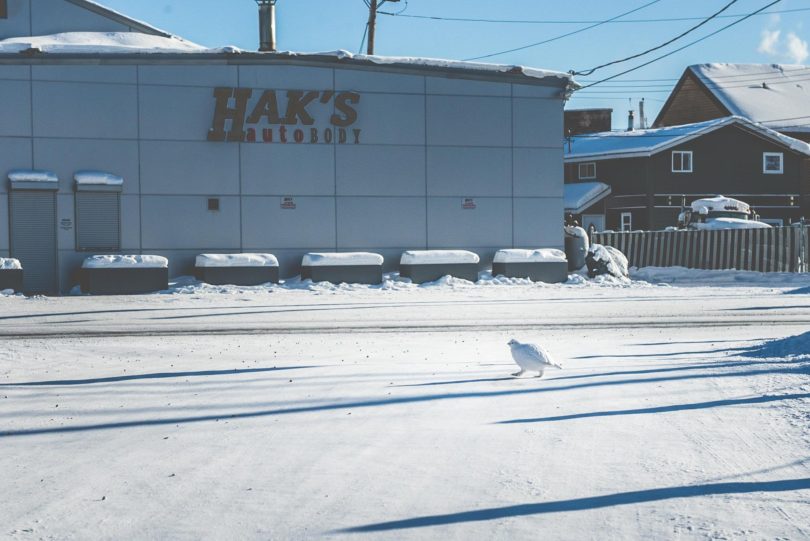


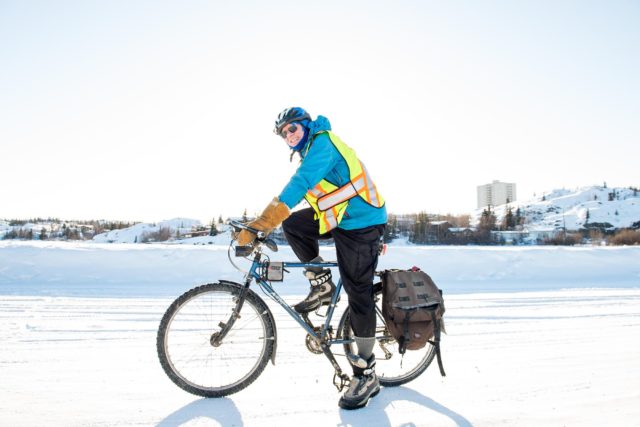
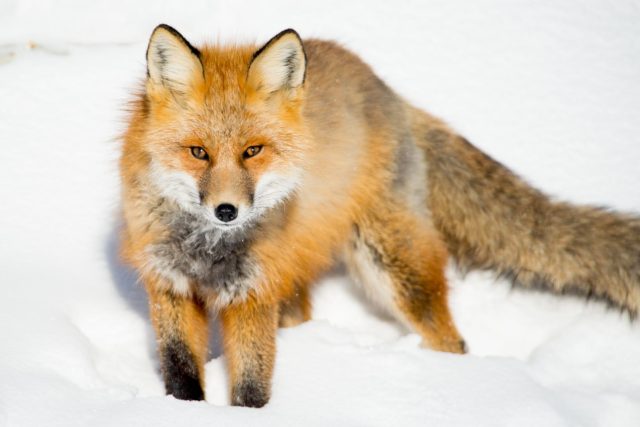
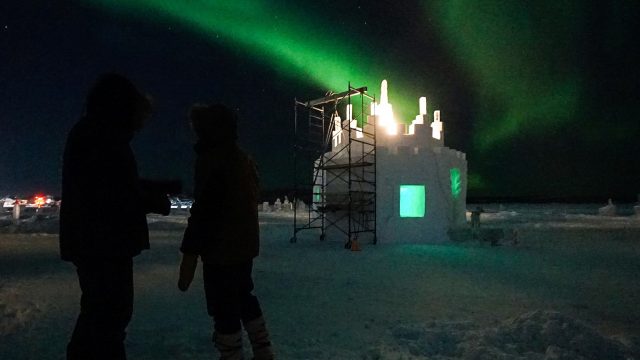
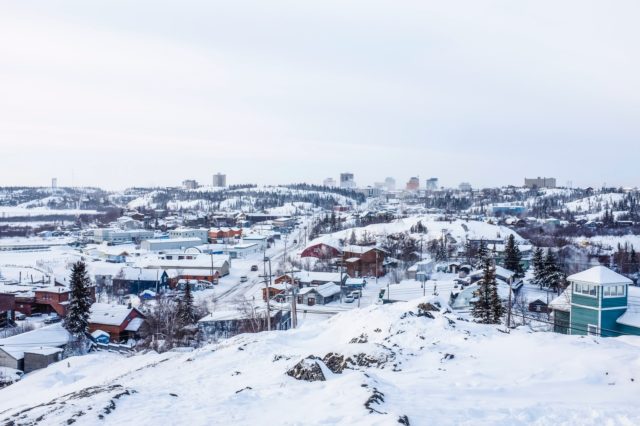
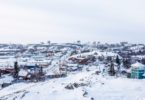

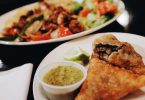



Hello! Thank you for this. Where would one find the Traditional Indigenous Cultural Activities you mentioned?
Hello Christina, I don’t have a specific list yet but you can look into the follow: Shawn Buckley of Great Slave Lake Tours (http://greatslavelaketours.com), Tugah Northern Experiences (https://www.tugah.com/) AuroraTours.net, B Dene Adventures, and North Star Adventures might have some.
A fantastic summary of the do’s and dont’s! Looking forward to the next episode before we arrive in mid March. ((Have already picked up a few hints!) Many thanks for all your work in producing all these little snapshots of Yellowknife. I almost feel ‘at home’ long before I arrive.